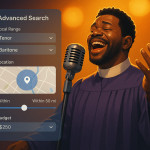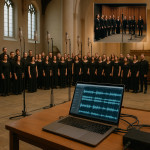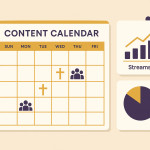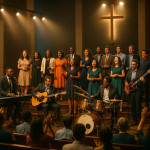Home studio gospel: remote recording setups that satisfy choirs and clients
Want to capture the joy of a full choir without leaving home? This guide walks you through a proven “home studio gospel” workflow—from gear lists to client hand-offs—so you can deliver studio-grade tracks that thrill congregations, producers and music supervisors alike.
Why remote gospel recording is booming
Churches are live-streaming, choirs tour less, and labels scout talent worldwide. A flexible home studio gospel setup lets you track vocals, layer harmonies and share stems the same day. You'll cut travel costs, protect voices from fatigue and widen your client base beyond your postcode.
- Streaming platforms added 23 % more faith-based playlists in 2023.
- Virtual choir videos reached 1.2 B views last year.
- Producers now expect “broadcast-ready” stems within 48 hours.
Essential gear for a choir-friendly home studio
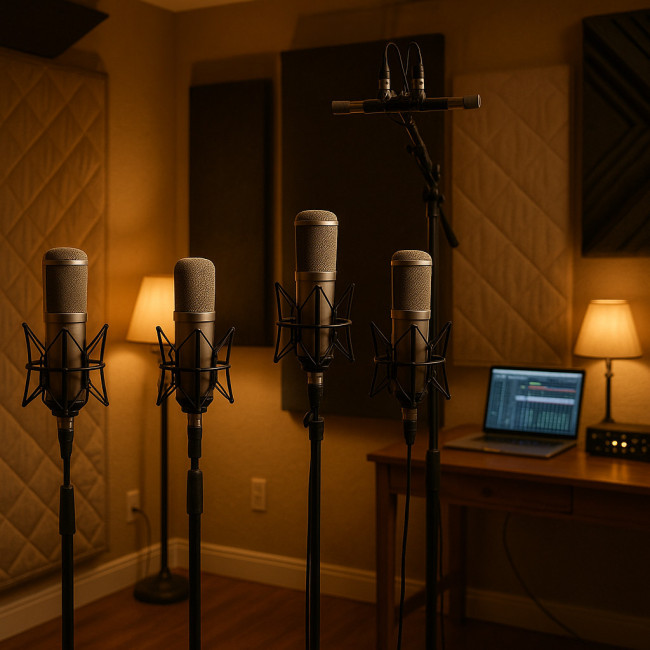
Before you dive into model numbers, visualize how all these elements fit together in the room: a circular mic arc for soloists, a back row of lightweight stands ready to pivot toward clappers, headphone extensions routed along the floor tape-marked like a stage, cable looms color-coded so altos never unplug tenors, and a laptop interface perched at whisper distance on an anti-vibration pad. Add LED bulbs set to 3200 K so skin tones look rich on remote video calls, and remember to leave a two-metre corridor so singers can swap positions silently between takes. Treat the plan like a miniature sanctuary; every square centimetre should serve either sonic clarity, performer comfort or session speed. That mindset will guide every purchase decision that follows.
Microphones that flatter gospel dynamics
Choose large-diaphragm condensers for lead vocals and small-diaphragm pairs for ensemble room mics. Cardioid patterns tame room bleed while retaining warmth.
Interfaces and converters
At least four clean preamps with 24-bit/96 kHz resolution keep stacked harmonies crystal clear. Popular choices: Focusrite Clarett + or Universal Audio Apollo Twin.
Room treatment on a budget
Thick duvets, corner bass traps and a movable reflection filter create a controlled space without construction. For tips on cost-saving acoustic hacks, see our guide to budget self-recording gear.
| Component | USB Plug-and-Play | XLR Pro Chain |
|---|---|---|
| Setup time | 5 min | 20 min |
| Max inputs | 2 simultaneous | 8 + |
| Typical cost | €120–€250 | €600–€1 800 |
| Upgrade path | Limited | Modular |
Latency: the invisible choir director
Anything above 20 milliseconds confuses tight gospel claps and call-and-response passages. Target round-trip latency under 10 ms by combining low-buffer settings (64 samples) with a wired Ethernet connection.
Source : Audio Engineering Society
Session workflow that keeps clients in the loop
- Pre-session brief. Collect arrangement, tempo map and reference mixes via a shared drive.
- Sound-check video call. Use low-latency apps like Sessionwire or Audiomovers. For etiquette pointers, visit our piece on remote composer–singer workflows.
- Record in sections. Track leads first, then altos, tenors and basses. Overdub crowd claps last.
- Real-time uploads. Print rough mixes every two takes and drop them in a “Live Feedback” folder.
- Client approval. Automatic notifications mean directors sign off while inspiration is fresh.
Deliverables that delight music directors
- 24-bit WAV stems, labelled “Lead_A3” or “Choir_StackB”.
- Tempo-mapped project file (Logic, Pro Tools or Reaper).
- Rough mix at –6 LU integrated to leave mastering headroom.
- One-minute teaser MP3 for socials—great for updating a showreel that books remote session gigs.
Budget planner: start small, scale smart
Below €1 000 can yield impressive results. The table shows a phased approach.
| Phase | Investment | Impact |
|---|---|---|
| Starter | €450 | 2 mics, interface, DIY treatment |
| Growth | €950 | Extra preamps, choir headphone amp |
| Pro | €2 400 | Premium converters, dedicated vocal booth |
Need help juggling rehearsal times as you scale? Check the guide to flexible rehearsal scheduling.
Common pitfalls and how to avoid them
Over-compressed leads
Gospel runs need dynamics. Aim for peaks at –3 dBFS and a gentle 3:1 ratio.
Room-tone mismatch
Change mic position between sessions? slate files with clap spikes so editors can match ambience later.
File-naming chaos
Stick to “SongName_Part_Singer_#Take”. It keeps directories tidy for mixing engineers hunting your tracks on the gospel singer directory.
Remote-recording IQ Quiz
FAQ
- Can a single vocalist emulate a full gospel choir at home?
- Yes. Record multiple passes with varied timbre and distance. Blend in slight pitch and timing shifts for realism.
- How do I avoid phase issues when stacking harmonies?
- Change your position by at least 30 cm between takes and flip polarity on every other layer when monitoring.
- Is Zoom good enough for live remote feedback?
- For talking, yes. For synchronous singing, use low-latency platforms like Jamulus or Audiomovers.
- What sample rate should I pick?
- 48 kHz is industry standard for video and live streams, balancing quality and file size.
- How can I showcase finished tracks to recruiters?
- Upload 30-second highlights with consistent loudness standards; see our advice on voice demo specs.
Ready to raise the roof from your living room?
Invest in the right gear, lock down a latency-smart workflow and package deliverables like a pro. Your home studio gospel sessions will inspire choirs and satisfy demanding clients—without anyone booking a tour bus.
Next step: Draft your first virtual session proposal today and watch your inbox fill with hallelujahs.
